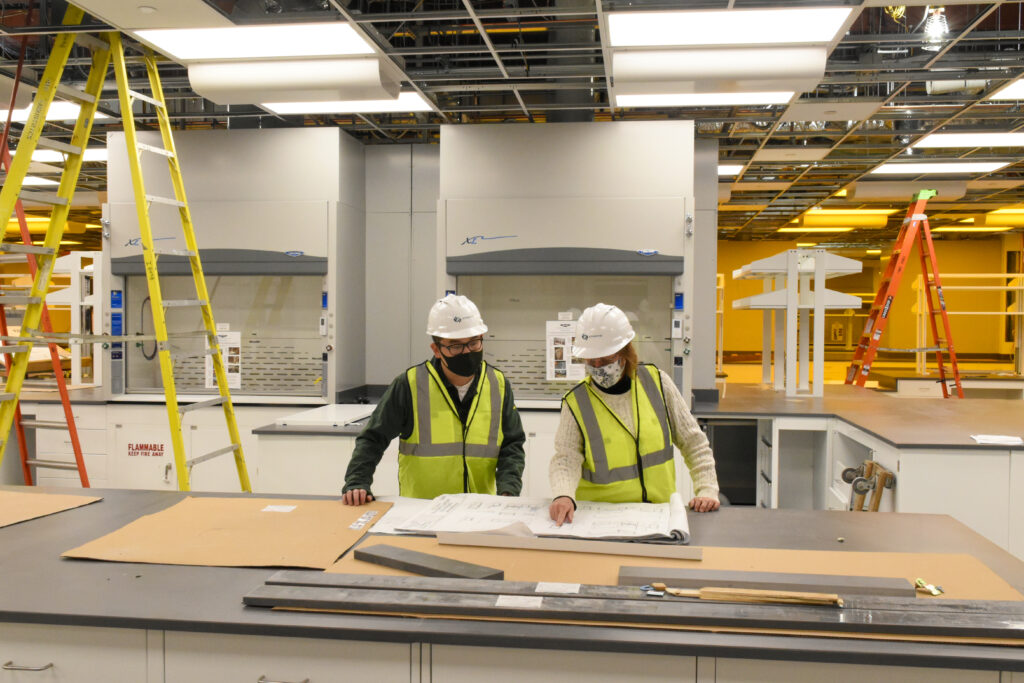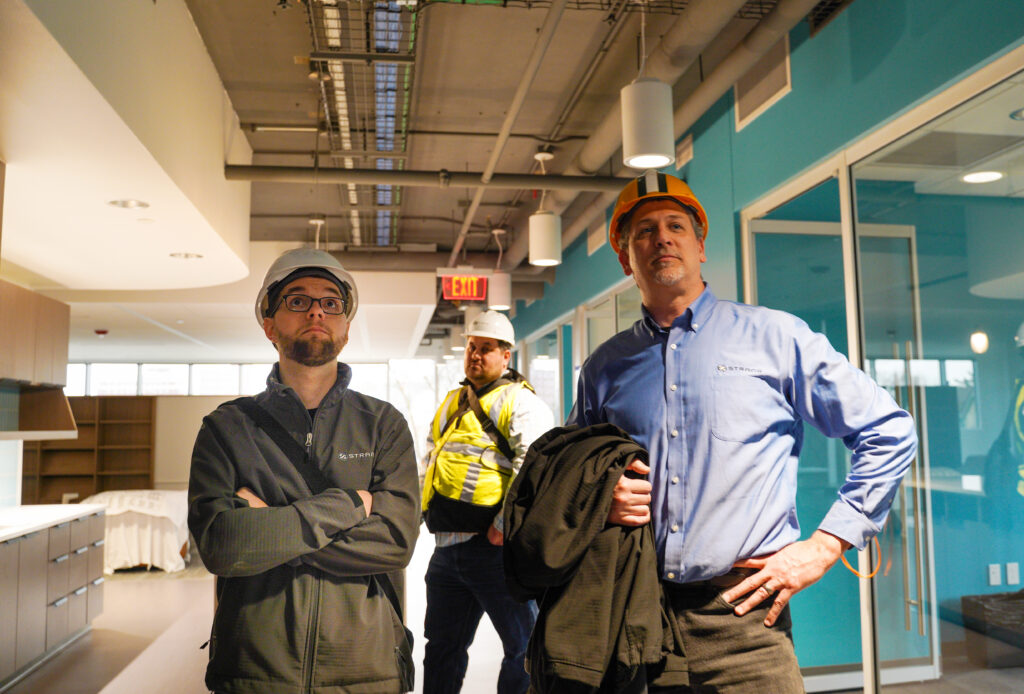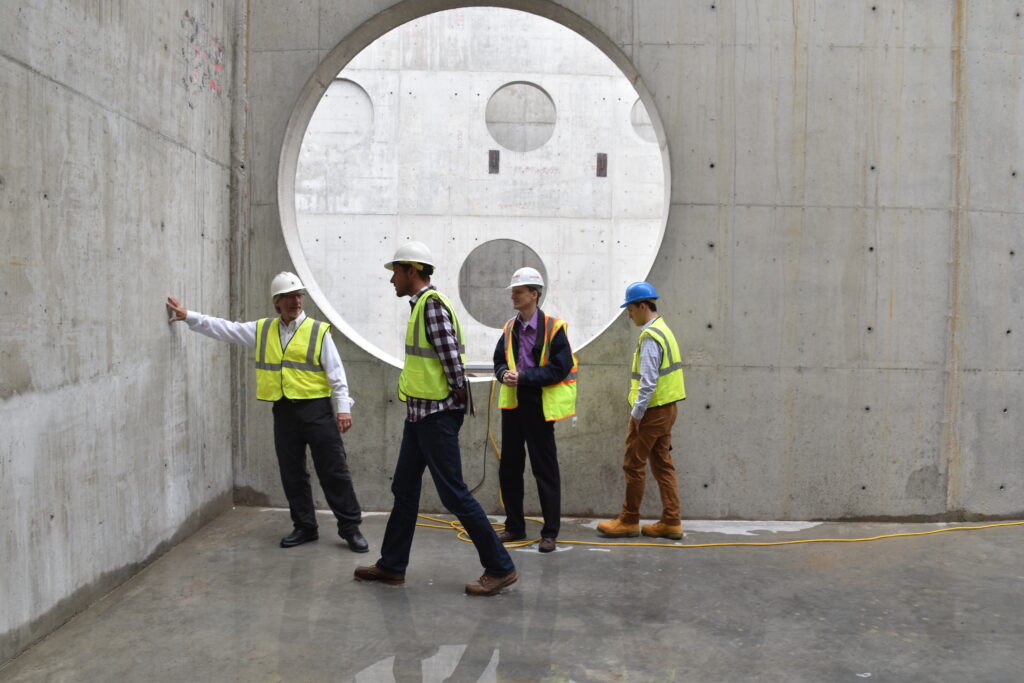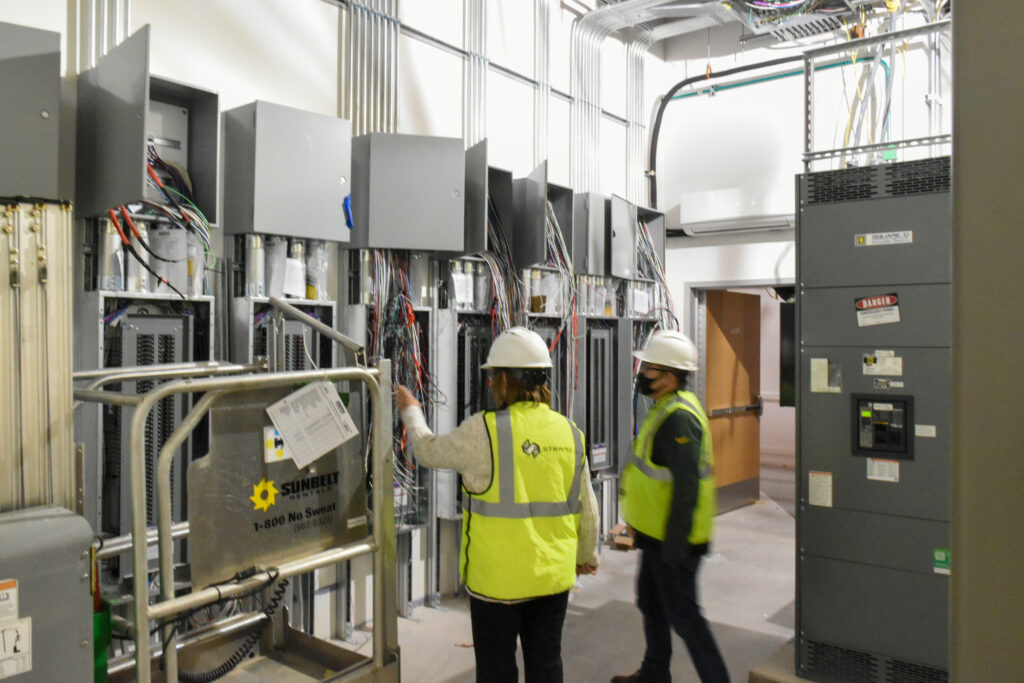Experience the Advantage

Within the architectural and contractor’s realm, CA refers to “Construction Administration” or the role of “Construction Administrator”. However, within Strang, we’ve updated the title to better align with one of the most critical CA responsibilities, thus the name, Construction Contract Administrator. This shift in perspective yields actionable benefits to clients, colleagues, and contractors alike. Let’s learn more.
First, we should put the CCA narrative into context. It all begins, simply enough, with Strang’s proprietary project management protocol entitled, DESIGN SYNCHRONICITY. This methodology empowers Construction Contract Administrators to use the advantages of Integrated Service Project Management. And who doesn’t like an advantage?
The CCA experience at Strang adopts cross-functional lines of communication, establishes project priorities, and achieves approvals ensuring smooth building development. At Strang, there is a strategic reason for what we do, how we do it, and why we do it. DESIGN SYNCHRONICITY is pivotal in creating the optimal client experience.
What happens during construction contract administration?
- Project records: Identify contract documents, review preconstruction submittals, advise on contract forms.
- Project initiation: Participate in the bidding process, review constructability of design.
- Quality assurance and quality control: Review submittals, RFI’s, payment applications.
- Site visits and observations: Preconstruction and project meetings, observe quality and progress of work, issue field reports.
- Claims and disputes: Interpret contract documents, review proposed changes, dispute resolution.
- Project closeout: Confirm closeout procedures, determine date of substantial completion, identify nonconforming work, review closeout documents.
“One of the most rewarding experiences is making our clients realize how our team can help streamline the project delivery process and ease some of their concerns. Construction projects can be very stressful for clients, and we are there to educate them on the process, ease concerns, and advocate for them through to project completion."
Michael Kundinger, Director of Specifications | Construction Administration
ADVOCACY IN ACTION
One of CCAs most important functions is all-around advocacy. It’s about integrating and strengthening a shared set of success metrics, for clients, colleagues, and contractors alike. From reviewing submittal packages and contractor payment applications to approving change orders, assessing the project schedule, responding to contractor questions, or building code compliance, CCAs oversee every phase of your project, verifying that design intent is met. In-depth experience in construction techniques, communications, and on-site project observations are invaluable in maintaining clients’ schedules and budgets.
CCA Exists to Strengthen the Entire Team’s Performance Through Connectivity, Communications, and Consensus
Strang’s CCAs are about problem-solving, fairmindedness, mutual respect, and often, being the voice of reason. This applies to claims or disputes, interpretation of contract documents, or reviewing proposed changes. With an advocacy mindset, such circumstances are minimized. That is why here, CA also stands for Client Advocate.
“We’re advocating for the owner/end user who has a dream, and we want to help bring that dream to life."
Sarah Phillips, Lead Construction Administration | Architectural Design Specialist
FROM THE TOP
From early concepts to project closeout, Strang’s CCA professionals utilize their expertise across the board. For example, there exists a dizzying amount of Contract Documents. Strang’s dedicated CCA pros make it their responsibility to understand which documents to use for your project—a challenging task, particularly when multiple documents “appear” to be the correct choice. Our CCA team offers proven insights and guidance on which of these contract forms to engage.
The wise adage, “accuracy first, then momentum” applies.
We have also witnessed where the “paperwork” is written with good intentions but lacks the necessary experience or attention to detail. Incorrect forms, bad entries, or omissions at this stage will almost certainly mean avoidable (and potentially expensive) headaches down the road. Moreover, you’re now “attacking” your own schedule before the project even gets off the ground. After all, the schedule IS the project. Our CCA team provides peace of mind regarding proper documentation to get the entire team off on the right foot.


PRESS ON: PROJECT INITIATION
Both building new or repurposing the old can be a daunting task. Even veteran building stock owners will consider carefully before beginning a project. After all, there’s a lot at stake.
Strang’s CCA staff have honed a precise analytical progression to the bidding process.
So, following thorough vetting, the project has been “Green Lighted”. These early, careful steps are crucial to achieving a successful project. To begin with, we have a responsibility to preserve resources—human, environmental, and financial. That all begins with a project-specific bidding process. Accordingly, avoid the templates or cheat sheets just in the name of saving time. Our CCA experts streamline the bidder selection process by capturing and stratifying the actual bids. This is a comprehensive and highly communicative process to further strengthen your project’s success factor.
The overarching goal is to achieve a cost/value effectiveness ratio—for each individual project—which aligns with the budget, schedule, and quality standards established by the client and Strang during the project initiation phase.

BUT IS IT FEASIBLE?
Our CCA personnel are also closely engaged in the project’s Constructability. While your initial designs look spectacular—do they meet specific project criteria? There must be ongoing, objective reality checks between the client, the architect, systems engineering, and CCA staff.
Design dynamics must not interfere with dynamic designs.
Here too is where our CCA pros provide a fresh set of eyes. Each discipline is in regular communication regarding componentry integration, design, budget/schedule adherence, safety, cost-of-ownership, environmental impact, and advanced building systems. We constantly evaluate for intelligent designs that make sense from a practical perspective, i.e., livability, productivity, and flexibility. Our CCA staff thoroughly evaluates cost savings opportunities, sharing with the entire team where a budget enhancement could actually yield beneficial ROI.
In the final analysis, constructability requires everything about this project to make sense, now and well into the future. Our CCA pros help ensure that it does.

THERE IS NO SUBSTITUTE FOR QUALITY
CCA also observe quality assurance and quality control standards, checking to make sure that the contractor has a QA/QC plan and that they follow it and the contract documents. Through site visits and experienced observations, CCA staff keep a fresh, critical eye on the progress of work, issuing detailed field reports for the team’s review. By being on-site regularly we can help ensure that the project will be in compliance with our documents.
In every project, we execute a comprehensive plan to oversee the continuity of design and documentation responsibilities from beginning to end. An actionable quality control and coordination plan is essential to project success.
Quality is a result of active listening.
These administrative steps are required to meet the systems Basis of Design, and to see that opportunities are identified, accurately evaluated, and ultimately incorporated into the project from the outset. Proper integration and quality reviews will also be conducted to ensure a quality set of documents and execution in the field.
“With the use of dedicated CA software, documentation and lines of communication are faster and more accurate than ever before."
Sarah Phillips, Lead Construction Administration | Architectural Design Specialist
Managing quality during the construction phase includes activities, such as reviewing the contractor’s schedule of values, construction schedule, technical product/system submittals, and requests for information (RFI’s). Strang uses PART3, a dedicated CCA software to organize and track the workflows for submittals, RFI’s, and site field reports during the construction contract administration process. This is a mindful, comprehensive, and all-inclusive approach to contract administration. Again, we are striving for true integrated service project management.


THE FINISH LINE
Your project is heading down the home stretch, but don’t let the anticipation of occupancy overshadow the importance of a thorough project closeout process.
First, there needs to be confirmation on the procedure itself. Ideally, there should be agreement on a sequential succession of which aspects of the project to review—and to what degree. Then, we need to agree upon the date of substantial completion, identify nonconforming work (that requires attention), and thoroughly review the closeout documents. Once again, the role of the advocate is extremely important.
Strang’s CCA personnel empower cross-functional lines of communications, prioritization, and approvals ensuring smooth building closeout.

With the power of DESIGN SYNCHRONICITY behind them, Strang’s CCA experts will earn your trust by helping you achieve the benefits and advantages of a truly integrated services project experience.
Questions? Please let us know how we can help. We welcome the opportunity to create an advantage on your side of the project.




